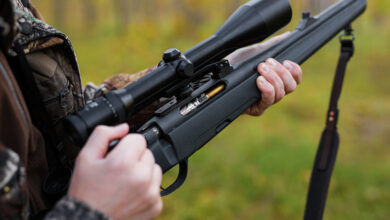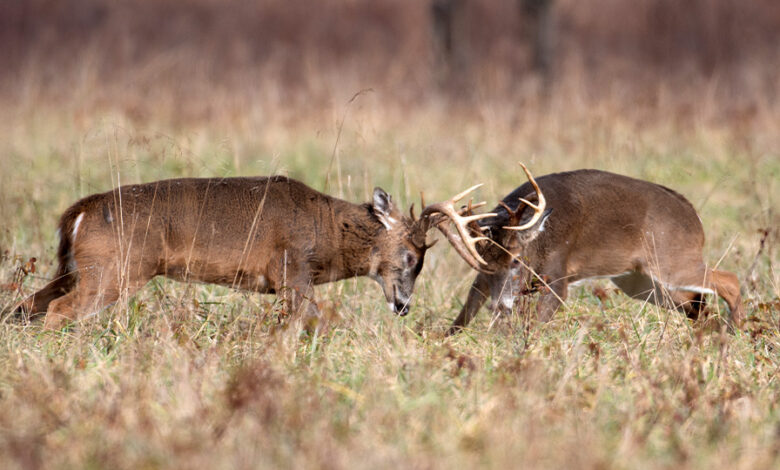
The rut is when whitetails are most vocal, most mobile, and (if you play it right) most vulnerable to smart calling and setup. Below are practical, field-tested tactics for every stage of the rut — plus the current top-selling picks so you can buy what most hunters are using right away.
Quick Rut Primer
-
Pre-rut / chasing: Bucks are chasing does and responding to estrous scents and bleats.
-
Peak rut: Bucks are actively fighting and checking scrapes — heavy responsivity to rattling, estrous, and decoys.
-
Post-peak: Bucks move less, focus on bedding/feed; calling works but needs to be more subtle.
Setups below assume you’ve scouted travel corridors, pinch points, funneling cover, or scrape lines and will place your stand/Blind downwind of the expected calling area.
1) Deer Calls — When and how to use them
Tactics
-
Use soft doe bleats and fawn distress sounds early in the morning to get a buck’s curiosity without putting him on guard.
-
During the chase phase, switch to estrus bleats and snort-wheeze imitations if a buck answers — that tells you he’s nearby.
-
Don’t over-call. Short bursts, then quiet. Let the deer react.
-
Learn to match intensity: a distant response = softer calling; an aggressive nearby buck = short, dominant grunts.
Top-Selling Picks
-
Illusion Systems Extinguisher Deer Call (grunt tube / multi-function).
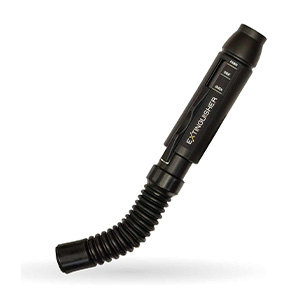
-
Primos “The Can” Deer Call (Estrus Bleat).
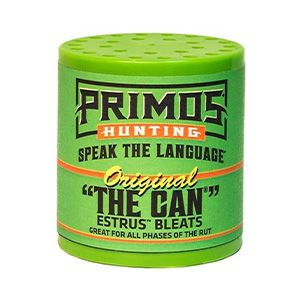
-
WoodHaven “The Intimidator” (grunt tube and snort wheeze)
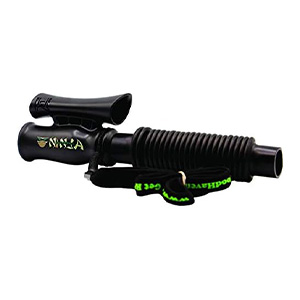
2) Rattling Antlers — Making bucks think a fight’s on
Tactics
-
Rattle early and short to simulate a fight in the distance. A few seconds of loud antler clack then quiet — wait and watch.
-
If you get silence, rattle again with pauses; persistent rattling can draw a mature buck testing the situation.
-
Pair rattling with grunt calls to sell the fight: rattle → buck grunt → silence. This combo often pulls in a territorial buck.
-
Location matters: Rattle at a crossroads or travel funnel where bucks can approach without suspiciously walking into open ground.
Top-selling Amazon picks (rattle bags & systems)
-
Hunters Specialties Hunting “Ruttin’ Buck Rattling Bag” (hand rattle bag).
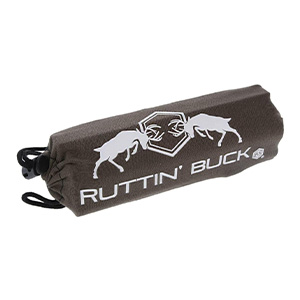
-
Illusion “Black Rack Rattling System” (loud and effective).
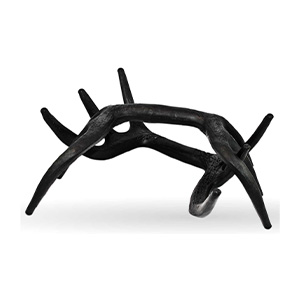
-
Knight & Hale “Pack Rack” (easily packable).
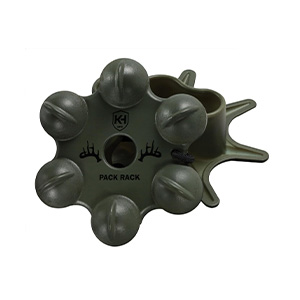
3) Estrous Scents (doe-in-heat)
Tactics
-
Peak rut = prime time for estrous. Use it on scrapes, mock scrapes, or low branches near your stand to hold a buck’s attention.
-
Apply sparingly — a little goes a long way. Use a dispenser, not a puddle.
-
Combine estrous with decoy setups (doe or estrous-scented mock scrape plus decoy) to create a realistic scene.
-
When hunting pressure is high, try paste/gel forms (they last longer, less volatile) or locked bottles to avoid spooking.
Top-selling Amazon estrous/heat products
-
Hunters Specialties “Buck Bomb Natural Doe ‘N Estrus Aerosol Scent” (spray in bursts or empty the can)
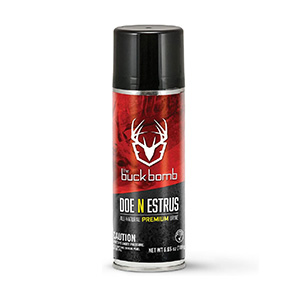
-
Code Blue Whitetail Doe Estrous (Collected using the From One Deer to One Bottle process).
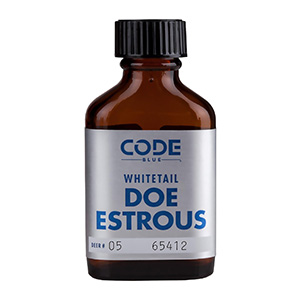
-
Pure Whitetail “Ultra Premium Doe Estrous Urine” (liquid/urine attractant).
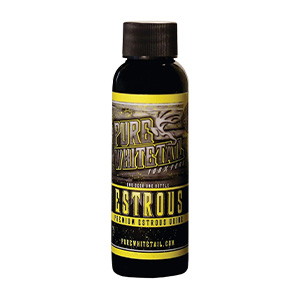
4) Decoys — How to place them for maximum effect
Tactics
-
Decoy choice matters: Doe decoys and submissive or estrous Doe poses work best during the chase; a posturing buck decoy can trigger territorial reactions during peak rut.
-
Set the scene: A single doe feeding by the edge of a field or two does with a submissive posture near a scrape is very convincing.
-
Ground placement: Keep decoy in natural feeding posture (head down) if you want to appear non-threatening; head-up or alert if you want to suggest recent disturbance.
-
Conceal your approach: Make sure the hunter is concealed and downwind. Bucks will circle and approach from angle; plan shooting lanes.
Top-selling Amazon decoys & popular realistic options
-
Flambeau Outdoors Masters Series Deer Decoy (agitate, not intimidate).
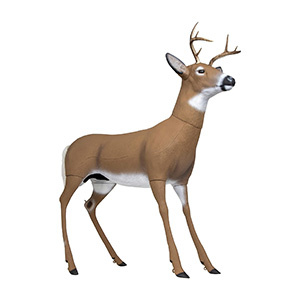
-
Primos Scarface Decoy (head and tail move in the breeze).
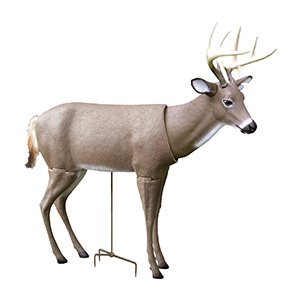
-
Montana Decoys The Freshman (folds flat and packable).
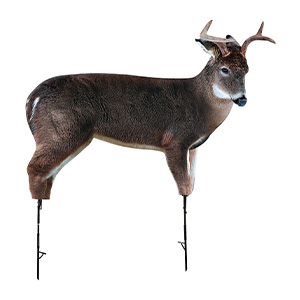
Putting it together — Two practical rut setups
The “Chase-Phase Ambush” (early rut)
-
Place a doe decoy at the edge of a small opening near a travel funnel. Position hunter concealed 20–40 yards away, downwind.
-
Spray a small puff of estrous scent on a low branch or near the decoy.
-
Use soft bleats (Primos/Extinguisher) intermittently. If you hear a grunt or snort-wheeze in response, switch to short rattling to simulate a challenger.
-
Be patient — bucks will circle to investigate; keep calling conservative to let them close.
The “Fight-In-Progress” (peak rut)
-
Rattle aggressively but briefly from a blocked funnel; then go quiet.
-
After a pause, make an aggressive buck grunt and set a posturing buck decoy closer to the strike zone.
-
If a mature buck answers with grunts, freeze-calling and minimal movement will let him commit to approach.
-
Keep estrous scent in reserve (a quick spray at the scrape can tip a hesitant buck over the edge).
Safety & Ethics Reminders
-
Know your target and what’s beyond it; decoys can cause close approaches and unexpected angles.
-
Follow local regulations around use of scent products and decoys (legalities around baiting, scent stations, etc., vary by state).
-
Use non-toxic, biodegradable scent options where possible and practice leave-no-trace.
After the shot, you may like to refer to our article “How to Process Your Game Animal After the Hunt: From Field to Freezer”

